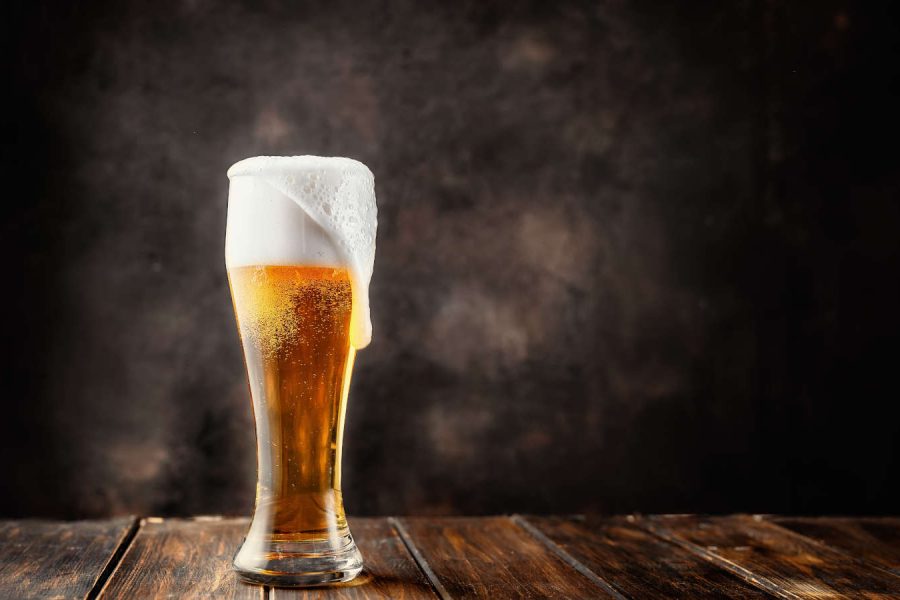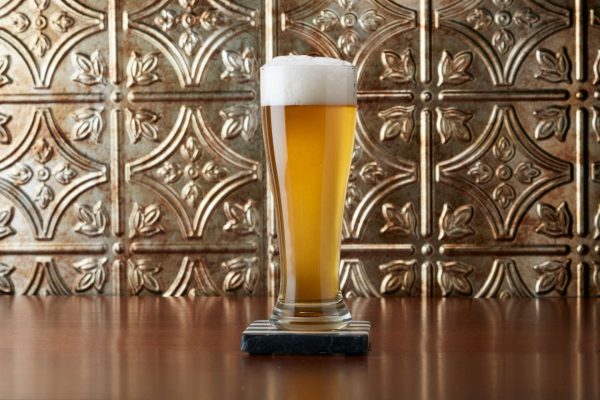
Czech Dark Lager is like a hoppier Munich dunkel, often with a sweeter finish. Many different versions exist, so we’ll start off with a recipe for a traditional 12° beer. Czech beers are normally referred to by their strength (starting gravity in degrees Plato, so a 12°P beer is 1.048) and their color. So this beer is a 12° tmavý ležák (dark lager) beer.
This version from Gordon Strong (featured in Modern Homebrew Recipes) relies on more highly kilned base malts with some caramelly and chocolatey specialty malts. It has the sweet balance of the older traditional versions
Sensory Description: Malty, rich, toasty, and bready with mild caramel and light roast flavor, somewhat sweet tasting in the balance due to moderately low bitterness. Medium-full body. Restrained but noticeable spicy hop aroma and flavor.
Formulation notes: When using fully-modified malts, a step mash works as a substitute (although most Czech brewers still use the traditional decoction mash). The base malts should provide a toasty and rich malty base with the specialty malts adding some caramel and chocolate flavors. The floor-malted Bohemian Pilsner malt from Weyermann can be used instead of the Vienna malt, particularly if a decoction mash is used. Saaz hops are traditional, so try to use those. Sterling would be a good US-produced substitute.
Czech Dark Lager is like a hoppier Munich dunkel, often with a sweeter finish. Many different versions exist, so we’ll start off with a recipe for a traditional 12° beer. Czech beers are normally referred to by their strength (starting gravity in degrees Plato, so a 12°P beer is 1.048) and their color. So this beer is a 12° tmavý ležák (dark lager) beer.
This version from Gordon Strong (featured in Modern Homebrew Recipes) relies on more highly kilned base malts with some caramelly and chocolatey specialty malts. It has the sweet balance of the older traditional versions
Sensory Description: Malty, rich, toasty, and bready with mild caramel and light roast flavor, somewhat sweet tasting in the balance due to moderately low bitterness. Medium-full body. Restrained but noticeable spicy hop aroma and flavor.
Formulation notes: When using fully-modified malts, a step mash works as a substitute (although most Czech brewers still use the traditional decoction mash). The base malts should provide a toasty and rich malty base with the specialty malts adding some caramel and chocolate flavors. The floor-malted Bohemian Pilsner malt from Weyermann can be used instead of the Vienna malt, particularly if a decoction mash is used. Saaz hops are traditional, so try to use those. Sterling would be a good US-produced substitute.
Ingredients:
- 6 lb (2.7 kg) German Vienna malt (Weyermann) – Mash
- 2 lb (907 g) German Munich malt (Weyermann) – Mash
- 8 oz (227 g) Dark Munich malt (Weyermann) – Mash
- 8 oz (227 g) Caramunich II (Weyermann) – Vorlauf
- 8 oz (227 g) Carafa II Special (Weyermann) – Vorlauf
- 0.65 oz (18 g) Czech Saaz 3.6% pellets – FWH
- 0.65 oz (18 g) Czech Saaz 3.6% pellets @ 60 min
- 0.65 oz (18 g) Czech Saaz 3.6% pellets @ 0 min
- White Labs WLP802 Czech Budejovice Lager yeast
Specifications:
Yield: 5.5 gallons (21 L)
Original Gravity: 1.048
Final Gravity: 1.012
ABV: 4.8%
IBU: 18
SRM: 22
Efficiency: 75%
Directions:
Water treatment: RO water treated with ¼ tsp 10% phosphoric acid per 5 gallons1 tsp CaCl2 in mash. Mash technique: Step mash, mashout, dark grains added at vorlauf
Mash rests: 131°F (55°C) 15 minutes, 147°F (64°C) 30 minutes, 158°F (70°C) 30 minutes, 170°F (77°C) 15 minutes.
Kettle volume: 7 gallons (26 L)
Boil length: 60 minutes
Final volume: 5.5 gallons (21 L)
Fermentation temp: 50°F (10°C) 2 weeks. 32°F (0°C) 12 weeks.
Variations: Can be made in various strengths; if modifying, choose strength based on whole numbers when expressed in degrees Plato (1.044, 1.048, 1.052, 1.057, etc.). The balance can be adjusted to suit tastes; if you want to adjust caramel flavors, change the amount of Caramunich. If you want more malty richness, increase the dark Munich. If you want to make this as a decoction mashed beer, you can use the a single decoction hochkurz style at the same rest temperatures, pulling the decoction while resting at 145°F (63°C). This version represents the more traditional balance of the style, with a more sweet impression. Modern examples are often drier, have a higher bitterness (to give a somewhat bittersweet flavor), and more late hops. To brew one of these, increase the IBUs to around 30, and double the last hop addition.




Share Post